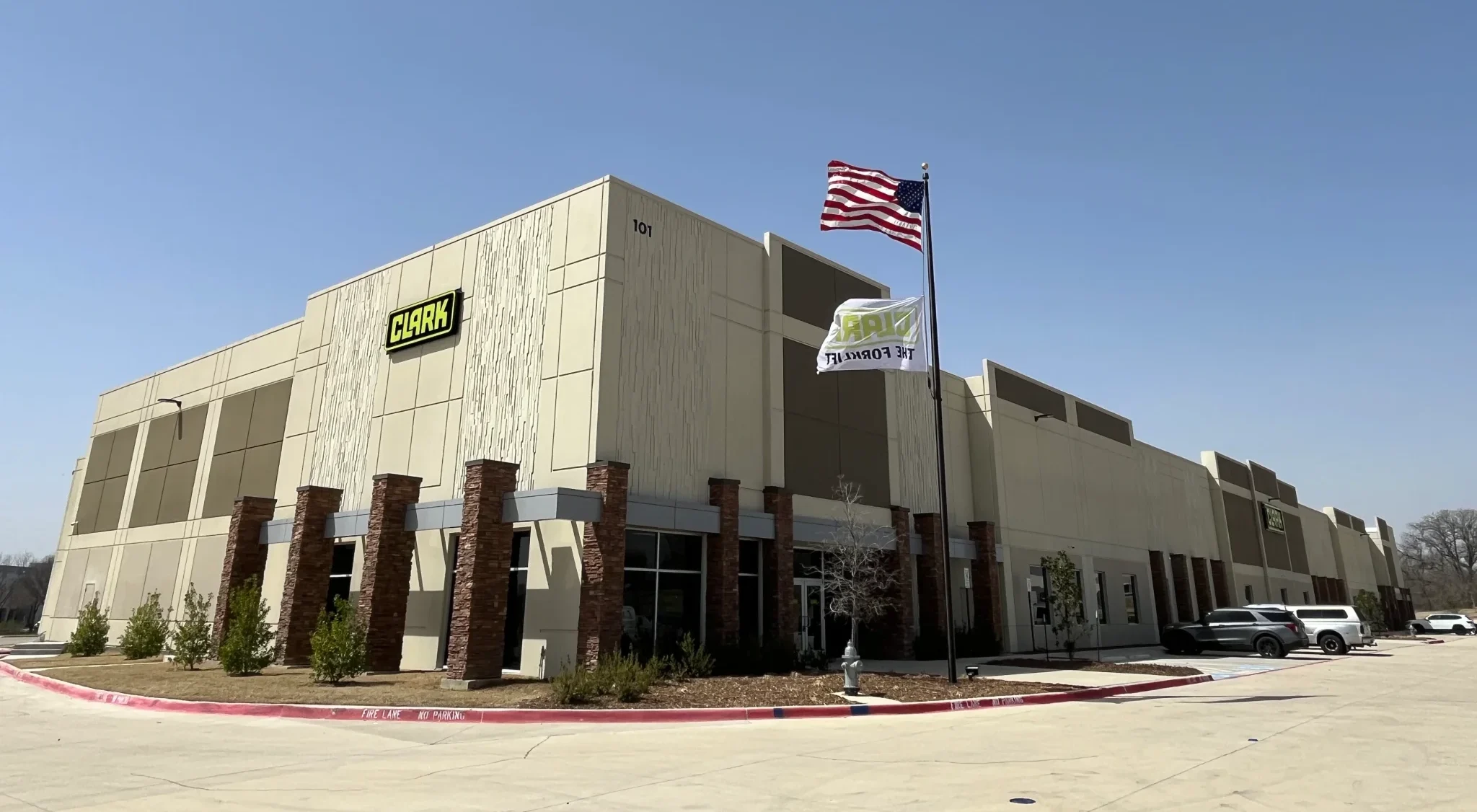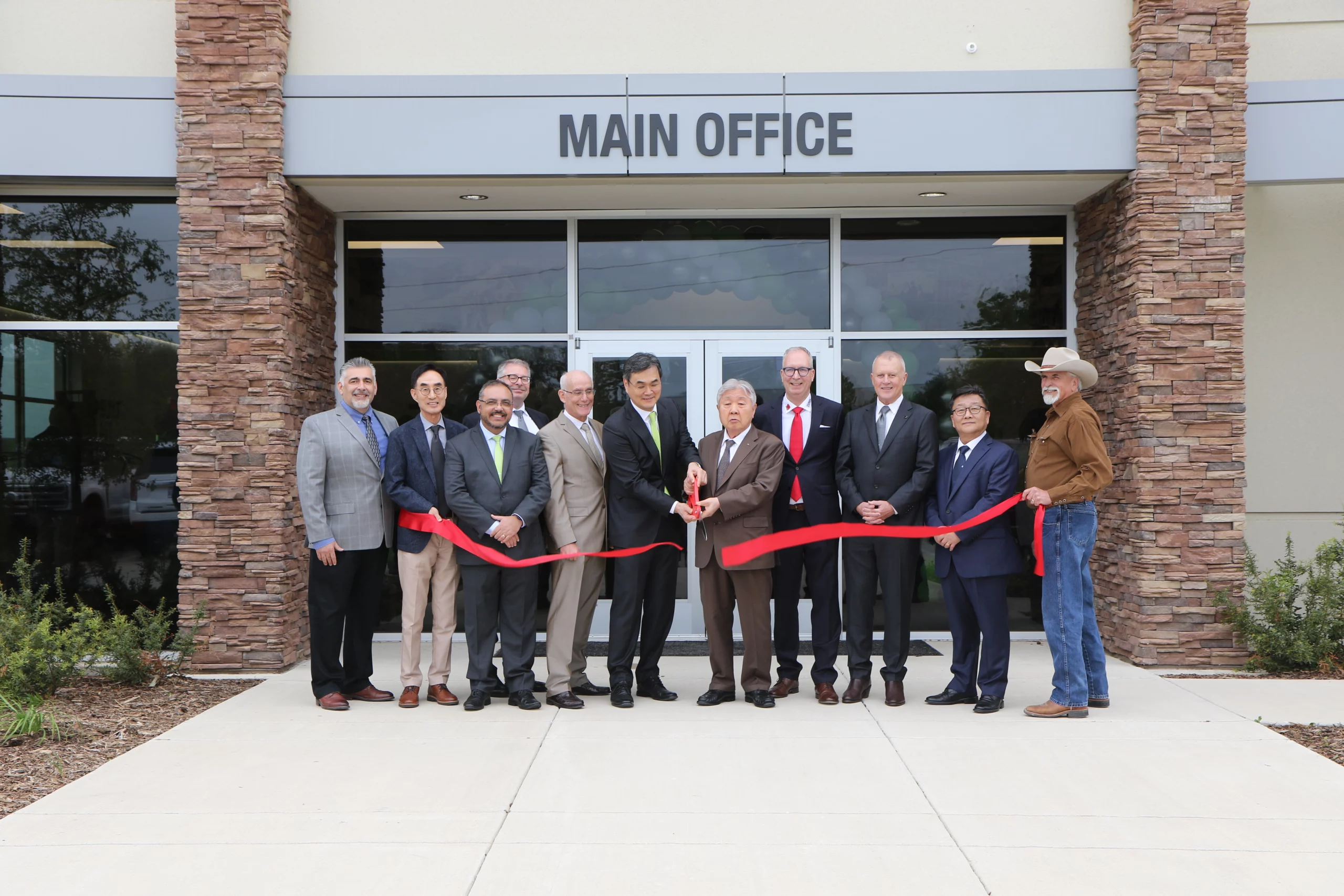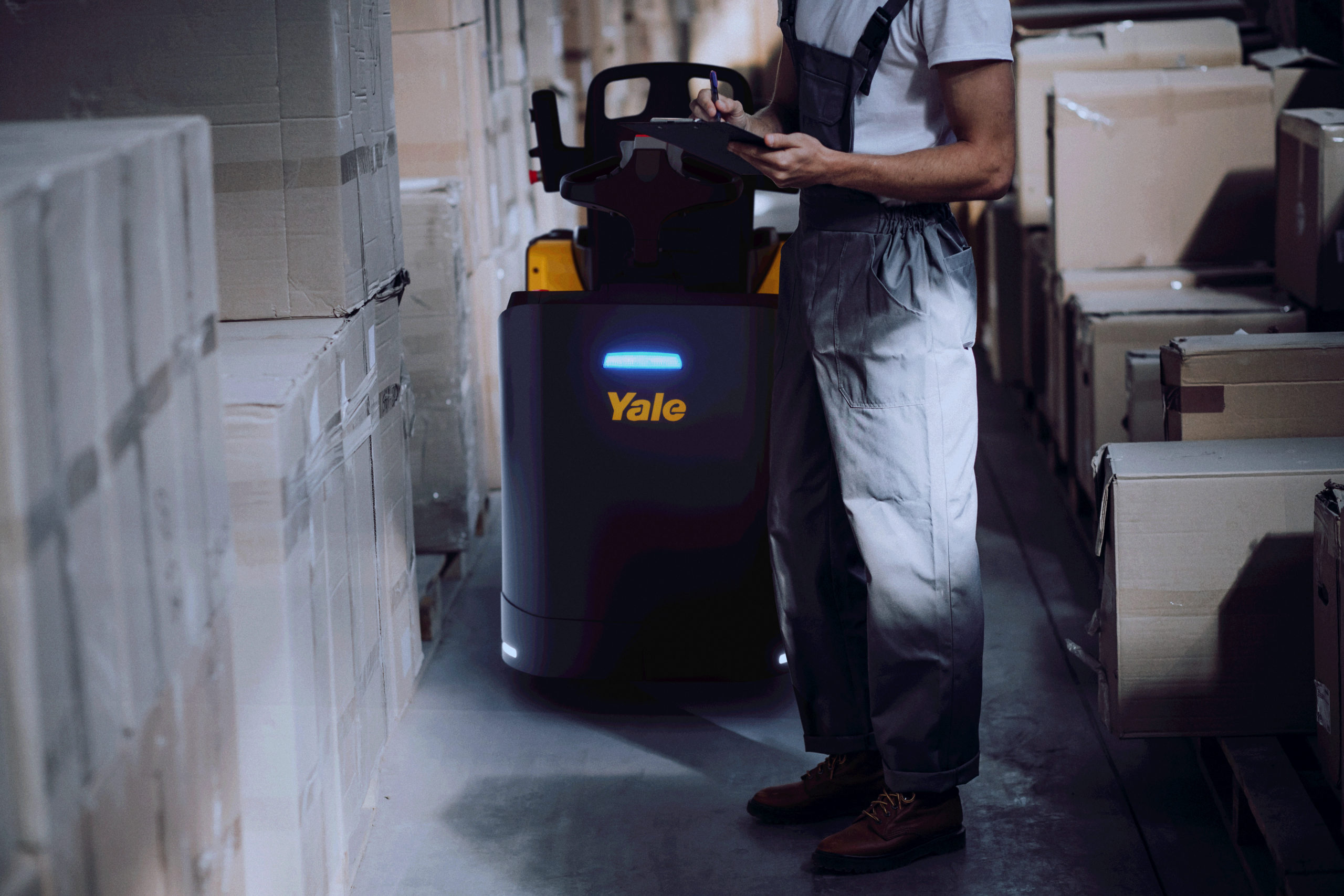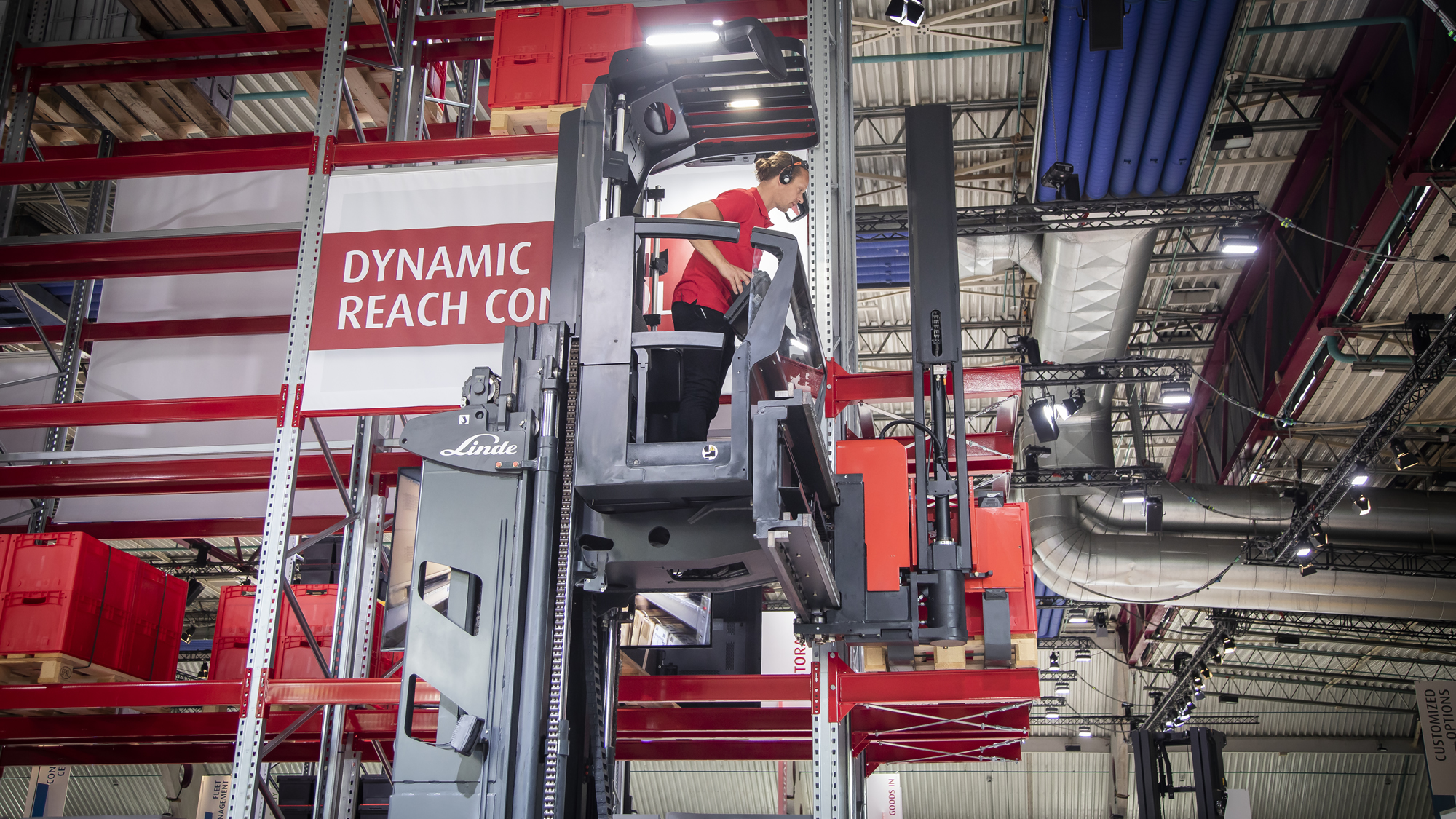Jungheinrich, RAVAS EUROPE, SAFELOG with Mercedes, SSI Schäfer and STILL have been announced as winners of the IFOY Award 2024.
The International Intralogistics and Forklift Truck of the Year (IFOY) Award recognises the best intralogistics products and solutions of the year. With the spin-off award IFOY Start-up of the Year, the Award organisation honours innovative technologies and new developments by founders. The test methodology is regarded as a seal of quality for innovations and newly developed products and solutions. The decision is based on the three-stage audit, consisting of the IFOY test protocol comprising around 80 criteria, the scientific IFOY Innovation Check and the jury test. The decisive factor is that the nominees are not compared with each other, but with their competitors on the market. The IFOY Award is chosen annually by an independent jury of international trade journalists, including Peter MacLeod of Logistics Business, the UK’s only representative on the jury.
Brightpick, Brightpick Autopicker – Start-up of the Year
The IFOY Spin-off Award “Start-up of the Year” goes to Brightpick for the autonomous, mobile picking robot Brightpick Autopicker. The international jury selected the AI-based 2-in-1 robot as the best new development in this market segment.
The Autopicker from Brightpick, a start-up founded in Bratislava in 2021, is the world’s first autonomous mobile picking robot. Brightpick worked closely with its sister company Photoneo on its development. Same founders, similar technology: 3D vision, robotics, AI and software for a functioning warehouse execution system. Autopicker installations with a total of 70 devices can now be found in the USA (headquarters), Germany, Slovakia and the Czech Republic.
What’s new about this type of picking: the Autopicker pulls the source tote from the standard rack, which does not require rollers or rails. As the robot moves on to the next storage location, it picks the target tote like a human picker, while taking the picked tote to the next storage location. There must therefore always be an empty space available in which the bin can be placed. The autopicker works with a trolley that picks and consolidates orders independently – without any human intervention.
In technical terms, Autopicker uses a patented design with two bins for this process to pull storage bins (storage tote) from the shelf, pick the items using a robotic gripper arm and place them in an order tote. The big difference to other fulfilment robots is that the autopicker does not have to go to central picking stations. Another advantage is its versatility, as it can be used not only for picking in the rack aisle, but also for other tasks such as pallet picking, warehouse replenishment, dynamic storage, order consolidation, temporary storage and shipping. And if human dexterity is required for picking, for example, the autopicker can also be used for normal goods-to-person picking.
The robots can also reliably pick a wide range of products, including chilled and non-chilled food, pharmaceuticals, medical devices, packaged goods, cosmetics, electronics and textiles in plastic packaging. The entire autopicker fleet and the fulfilment process in the warehouse are orchestrated and optimised by the Brightpick intuition software.
IFOY Verdict
The fact that picking takes place while a robot is moving from one location to another without the robot having to return to a “base station” is new and revolutionary. Although an exact measurement during the live assessment at Test Days was not possible, a higher throughput rate and thus a considerable time saving could be confirmed. This leads to a reduction in the number of robots required, which has a positive effect on the return on investment and noticeably reduces picking costs. According to Brightpick, the savings in labour costs are significantly higher than with traditional goods-to-person stations, with higher throughput, easier installation and lower costs. The company claims that picking costs have been halved.
Click here for the original test report, IFOY Innovation Check and pictures
Jungheinrich, EJC 112i – Warehouse Truck Highlifter of the Year
The IFOY Award 2024 in the “Warehouse Truck Highlifter” category goes to the EJC 112i from Jungheinrich. The international jury voted the compact highlifter the best new product in this category.
With its compact design and outstanding performance, the EJC 112i sets a new standard in the entry-level segment and clearly stands out from the competition. Especially in small warehouses with narrow aisles, the high residual capacity enables optimum space utilisation. Together with the small turning radius and user-friendly operation, it is clear why the EJC 112i makes day-to-day work easier for every operator.
The EJC 112i is more than just a further development of its predecessor, but offers an even more compact and manoeuvrable solution thanks to the integrated lithium-ion battery. When designing the truck, Jungheinrich paid particular attention to the high energy density of lithium-ion technology, which stores the same amount of energy in significantly smaller modules. This not only saves space, but also opens up new possibilities in terms of truck size. The result is immediately apparent: the EJC 112i has a smaller L2 size, offers a good view of the fork and has a low overall height. The impressively small turning circle makes manoeuvring effortless, even in tight spaces.
To compensate for the shorter length and lower weight of the lithium-ion battery, the truck has been completely redesigned. The mast profiles have been widened in the side view and the steering arms have been reinforced. The entire chassis is balanced to ensure optimum force equalisation. The result is immediately noticeable when the load is lifted. At the maximum 1,200 kg, the EJC 112i does not move and effortlessly lifts up to 2,900 mm. Up to 3,800 mm, the truck picks up 830 kg and at the maximum lift height of 4,700 mm, 650 kg still remains, all with a load distance of 600 mm.
The increased residual capacity of the EJC 112i optimises space utilisation and minimises floor space requirements, as heavier loads can be stored in higher racks. The IFOY test confirms that the EJC 112i offers the best performance in its class, with exceptionally high lifting and lowering speeds and efficient performance. Thanks to the more powerful pump motor and a better balance between pump power and lift cylinder, the new truck lifts significantly faster than its predecessor and well above the average in this class.
The driving and acceleration speeds have remained almost the same. In the most powerful setting, P3, the EJC 112i achieves a comfortable, even speed of 6.05 km/h with and without a load. The battery capacity and the power of the charger can be adapted to the individual operating conditions and specific energy requirements. The built-in charger can also be easily charged at any socket.
IFOY Verdict
The EJC 112i performed impressively in the IFOY audit, proving its position as the new benchmark in the entry-level pedestrian stacker segment. At the heart of the design in the range is the integrated lithium-ion battery, resulting in an even more compact and manoeuvrable truck with unparalleled residual capacity and outstanding performance. The truck offers noticeably good stability and operates comfortably and predictably.
Click here for the original test report, IFOY Innovation Check and pictures
SAFELOG, mobile transport robots in the Mercedes Factory 46 – Integrated Customer Solution of the Year
The IFOY Award 2024 in the “Integrated Customer Solution” category goes to SAFELOG for its use in the Mercedes Factory 46. The jury selected the future vision of the Mercedes-Benz production system, which was developed and implemented in close cooperation between SAFELOG and the car manufacturer, as the best customer solution of the year.
During the conversion and modernisation of an assembly hall to produce the E- and GLC-Class series at the Sindelfingen site, the focus was on the networking and transparency of all intralogistics supply processes as well as the necessary data acquisition and evaluation. To this end, new technical solutions were jointly developed, and standards implemented. Pick-by-light systems and around 350 AGVs from SAFELOG are used for subsystems such as picking baskets of goods and transporting them to the assembly lines to be supplied. This involved a total distance of 15 km. SAFELOG also supplies the car manufacturer with its entire system in Europe and the USA, which adds up to a total of 3500 AGVs. The family-owned company SAFELOG, with around 260 employees, is not only known for its mobile robotics expertise, but also for its philosophy of “German equipment at a Chinese price”.
The solution nominated for an IFOY Award is the final stage of years of collaboration between Mercedes-Benz and SAFELOG. The main asset is that the AGVs communicate with each other as a swarm. At Factory 46, where the new E-Class is produced, Mercedes-Benz is responsible for the software, while SAFELOG is responsible for the hardware and project implementation. At Mercedes-Benz, Factory 46 stands for the consistent further development of digitalisation and transformation in the automotive industry. Downtimes and cycle times are critical factors in the automotive industry. When a vehicle has to be delivered every 90 seconds, perfection and standards are required. In addition, the AGVs have to drive in such a way that everyone working in the plant interacts harmoniously with the AGVs and there are no panic or uncertainty reactions. To achieve this, the entire hall is networked via statistical pattern recognition using artificial intelligence (AI). The data generated here can be used to predict disruptions in the near future – we are talking about minutes here.
As a digital twin, the real-time monitoring system developed by Mercedes-Benz monitors the location and status of the AGVs to the second. It collects data and displays the information graphically, making the store floor digital and transparent. In the event of faults, an alarm is sent to a maintenance terminal. The IoT data from the AGV LIVE driverless transport system is made available as data products for cross-domain data analyses. In this way, they make a supply chain contribution to the data-driven company.
IFOY Verdict
The use of SAFELOG AGVs at Mercedes-Benz may not be highly innovative, but it offers considerable customer benefits in a highly complex environment. This starts with the low price and the simple and robust implementation and extends to the software ecosystem developed together with Mercedes and an availability of 99.7 to 99.9%. In practice, this means 40 hours less downtime. The cost of one hour of downtime in the automotive industry is estimated at between one and 1.5 million euros. The fact that Mercedes develops and maintains the software and the master control system itself enables the OEM to act independently of licenses and to be as flexible as possible in the event of errors, desired changes and adjustments.
Click here for the original test report, IFOY Innovation Check and pictures
RAVAS EUROPE, iCP Carriage Plate Scale with Weighing in Motion Technology – IFOY Special of the Year
The IFOY Award 2024 in the “Special of the Year” category goes to RAVAS EUROPE for its intelligent fork carriage scale, iCP for short, with Weighing-in-Motion technology. The international jury selected the fork carriage weighing system for calibrated weighing during transportation as the best new development in this segment.
While forklift truck drivers previously had to stop the truck for a few seconds to determine the weight of the load on the forks, the iCP fork carriage scale with Weighing-in-Motion technology from RAVAS enables calibrated weighing during transportation. Without stops, without interrupting work and therefore at lower costs. In addition, drivers can continue to use all attachments, such as rotators and clamps, as usual.
RAVAS has used an existing weighing system as the basis for the new fork carriage weighing system. The intelligence lies in a smart box and intelligent algorithms, which were newly developed by the manufacturer. These algorithms consider the driving speed, the inclination of the mast and any unevenness in the floor. The measurement starts automatically when the pallet is lifted. The weight of the pallet is determined during transportation. The technology combines high-quality, certified sensors with fast electronics and customised software that connects the sensors.
An additional advantage for the driver is that a weighing display – as is still present on the IFOY demo stacker – is no longer required and therefore the view of the working environment is not unnecessarily obstructed. To determine the weight accurately, the truck should preferably drive at a constant speed and on a level floor. A special feature of the Weighing-in-Motion technology is that reliable measurements are generated even on uneven floors, as the software eliminates interfering effects.
There are other reliable systems on the market that dynamically determine the weight of a load, but the RAVAS system is the only system certified by the OIML. This means that Legal for Trade customers can bill based on weight. The OIML is the international organisation for legal metrology and only requires occasional zeroing of the system.
Weighing on the move reduces labour costs and ensures that loads remain within the specified weight limits. This also prevents damage to equipment or goods. If required, the data is forwarded to an ERP or WMS system in real time. The data provides an up-to-date insight into stock levels and can be used, for example, to optimise warehouse management or other systems.
IFOY Verdict
The importance of accurate data in logistics is high and continues to increase. The RAVAS iCP Weighing-in-Motion technology makes work more pleasant for the forklift driver and provides reliable measurements. The need to stop is eliminated. This leads to considerable time and cost savings. Safety is also increased as unnecessary movements and manual handling are avoided. Comparable solutions on the market cannot offer calibration.
Click here for the original test report, IFOY Innovation Check and pictures
SSI SCHÄFER, SSI Piece Picking – Stationary Robot of the Year
The IFOY Award 2024 in the “Stationary Robot” category goes to the fully automated SSI Piece Picking module from SSI SCHAEFER. The international jury selected the piece picking system as the best new development in this segment.
Centrifugal forces due to the rotational movements of an articulated arm robot are a thing of the past with the piece picking system developed by SSI SCHAEFER. Instead, a miniature gantry robot moves the gripper of the piece-picking cell to any position on the source and target containers. With the articulated arm robot, the gripper had a limited operating range and it was no longer possible to gently deposit sensitive goods. The main aim of the new development was to avoid container changeover times. While manual pickers can handle up to 350 picks per hour, the automated solution can handle around 1,200 picks per hour – around four times as many. In three-shift operation, an amortisation period of less than one year is therefore not really surprising.
The focus of the development was not only on the robot itself, but also on the holistic view of the technology, including feeding, removal and safety technology. The robot takes care of everything: fewer interfaces, less communication and no need for an operator. SSI SCHAEFER has also found solutions for typical sources of error, such as problems with gripping or incorrect depositing of products, which are then ejected. A double pick is also detected and put back “on the fly”. In addition, a patented pick point identification system is integrated to ensure that a gripper does not cover a barcode.
As the robot has three target containers available, sequencing is also somewhat more flexible. There is always one position to pick from and at least one position to place in. The source containers can have up to four subdivisions, which means that four products can be offered in one source container.
For the gripping process itself, there is a 2D and a 3D camera whose two images are superimposed. The suction cup itself can also bend or grip sideways in two stages. The weighing tolerance of the system is five grams per 35 kilograms. The parts are moved at a speed of two meters per second.
The SSI piece picking cell is manufactured in Kamen and delivered to the customer in a compact 20-foot container. A first system has already been delivered to the Irish pharmaceutical distributor Uniphar, and an identical cell will follow. Eight piece-picking robots based on articulated arm technology are already in use in Canada. The project is being driven forward by the three SSI SCHAEFER locations in Giebelstadt, Graz and Kamen. SSI SCHAEFER is also offering the robot cell to other general contractors.
IFOY Verdict
The piece-picking ensemble, which made a solid and high-quality impression in the IFOY audit, is suitable for a wide range of applications: cubic, cylindrical, tube-shaped or blister packs. In container format, the system is very compact, can be put into operation at the customer’s premises within a day and pays for itself within one to two years. The gantry robot with suction cups offers maximum flexibility and can handle delicate goods carefully by placing them as close as possible to the base of the container or to goods already in the target container.
Click here for the original test report, IFOY Innovation Check and pictures
STILL, EXV iGo – Mobile Robot of the Year
In the Mobile Robot category, the IFOY 2024 jury awarded the EXV iGo from STILL. The series-based automated pallet truck is the perfect door opener to the world of automated warehouse processes.
First of all, it should be made clear that the EXV iGo automated pallet truck from STILL for production supply and the pre-storage zone, which is manufactured in Chatellerault, France, is a series-production truck and not a project truck. Production follows the standard series processes of the Hamburg-based premium intralogistics company, and the truck already complies with the EN ISO 3691-4 safety standard for industrial trucks. In addition, STILL’s standard service technicians are 100% qualified for this truck following an iGo training course – without the need for robotics experts.
The plan is to build around 1000 EXV iGo units per year. The delivery time is around 15 weeks, the project realisation time from three months upwards. To ensure scalability, great importance was attached to intuitive operation and a user-friendly interface. For simple commissioning, the iGo easy tool was developed to create projects and display logistical flows. Instead of the large iGo Systems control system, iGo Easy now provides the customer with a limited interface whose scope can be easily clicked together and subsequently modified. Expert knowledge is no longer required to quickly install projects with limited complexity. STILL has integrated a simple interface into a complex system, allowing larger projects to pick up where smaller ones leave off.
In addition to commissioning, another focus is service, including maintenance and repair. The Hamburg-based company has gone to great lengths to make the truck service-ready. All trucks have a digital twin on the servers of Kion, STILL’s parent company, and the service technician can find every spare part in his truck the next day.
Technical details: The EXV iGo has a high residual load capacity of up to 1600 kg, can lift goods up to 3.8 m and reaches speeds of up to 7.2 km/h. Despite its design as a stand-alone device for repetitive transport tasks as well as storage and retrieval, the EXV iGo should also impress with process reliability and precision in mixed operation. The machine’s multi-level safety system protects man, machine and load with safety scanners, sensors, visual and acoustic warning devices and emergency stop switches to stop the vehicle immediately if necessary. Dual operation is also easily possible. The vehicle is powered by lithium-ion batteries that can be automatically recharged via contacts. The EXV iGo had to undergo the so-called break-and-bumper test, in which obstacles are placed in its path. It drove straight ahead and negotiated bends flawlessly.
IFOY Verdict
The fast commissioning in combination with a new, intuitive, web-based user interface makes the series-based mobile robot a smart door opener to the world of automated warehouse processes. Automation is quick and easy, and users also benefit from the fact that the EXV iGo can be configured, maintained and repaired via the STILL service network. The EXV iGo offers a successful and smart introduction to automated intralogistics processes, particularly for SMEs.
Click here for the original test report, IFOY Innovation Check and pictures
The IFOY Award, which is sponsored by the German Federal Ministry of Economics and Climate Protection, is supported by the Materials Handling and Intralogistics Association and the Robotics + Automation Association within the VDMA. IFOY partners are Messe Dortmund and the world’s leading forklift attachment manufacturer Cascade. The pallet partner of the IFOY Award is CHEP, world market leader in the pooling of pallets and containers. The logistics partner is LTG. The event partner is the HERMES.Wirtschafts.Forum.
www.ifoy.org
read more
IFOY FINALIST FOCUS: Extension of Hase Safety Gloves’ automated warehouse by STILL














